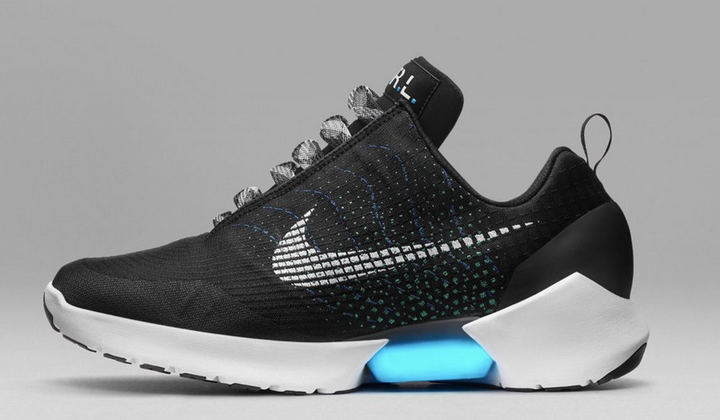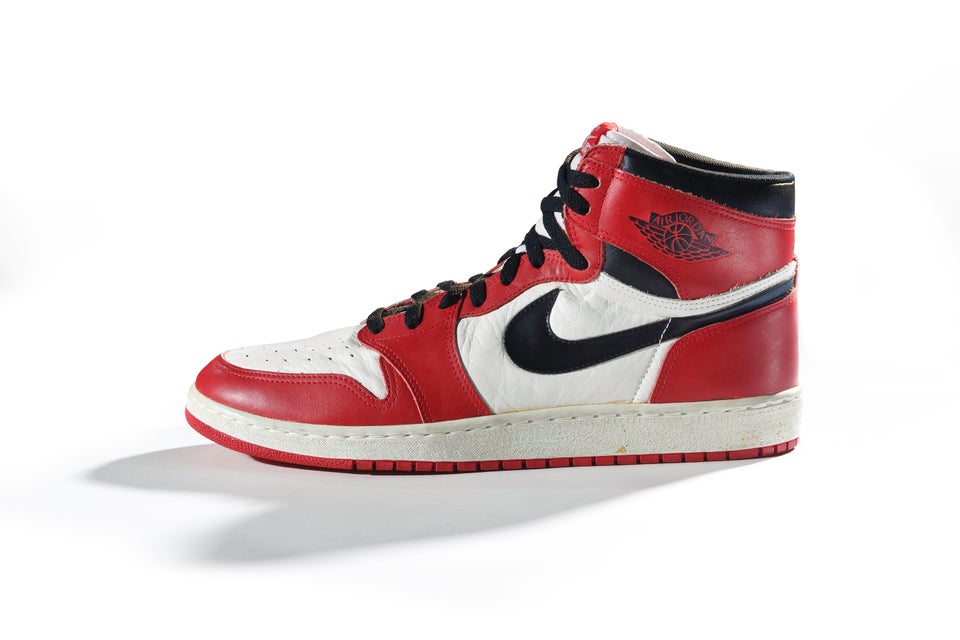After Nike's latest sneaker launch, it's not hard to imagine a future where our children will grow up abstaining from a key rite of passage: Learning how to tie your own shoes.
Nike unveiled the HyperAdapt 1.0 at Moynihan Station in New York City on Wednesday. The sneaker features state-of-the-art adaptive lacing, which automatically secures the wearer's foot as soon as they slip it on. That means no need to tie your shoes as you have been your whole life.
"What’s manual today will be automatic," Tiffany Beers, a Nike senior innovator who worked as the technical lead on the sneaker, told The Huffington Post.
"We’ll put shoes on and it will all happen for us. A lot of times I think, 'Iron Man.' That suit. I keep that in mind a lot. When Tony Stark first put that suit on -- that was a powerful moment."
Beers said that her team began working on the shoe's technology about 10 years ago. Fellow designer Tinker Hatfield, she said, had the "vision" for the sneaker when he worked on "Back to the Future II" in 1989, but the team had to wait for technology to evolve far enough -- and for motors to become small enough -- before it could become a reality.
Beers and her team sourced servo motors, similar to ones that are in small train engines and helicopter wings, and leaned on the transportation industry's engineering feats to help with their own motor development. (She's aware that once competitors get their hands on the HyperAdapt, copycats may follow.)
So how does this futurist product actually work? As Beers explained, when a wearer steps into the HyperAdapt, a sensor in the heel (the blue light seen below) will tell the sneaker's "brain" to auto-lace using a small motor, which needs to be recharged every two weeks.
As the laces start to lock in the foot, the brain actively measures the "attention" between the foot and the system until it reaches a snug fit, and automatically stops. To adjust the fit or release the foot, small plus-minus buttons are located on the side for manual control. While the sneakers have been water-tested, Beers doesn't recommend wearing them out in a rainstorm.
Beers noted that the HyperAdapt's heavily patented technology is similar to that of the 2015 Nike Air Mag -- a literal incarnation of Marty McFly's famous kicks -- which was Nike's first power-lacing sneaker. But while the Air Mag will only be available for charity auction in spring 2016 to benefit the Michael J. Fox Foundation for Parkinson's Research, the HyperAdapt will be available to Nike+ app members in three colorways starting in the 2016 holiday season. No retail price has been determined yet, according to a Nike rep.
But what Beers and Nike as a whole see as the greatest benefit of the technology is that it "reduces distraction." It enables runners, for example, to shrug off nagging worries of laces loosening when climbing a hill, and protects marathon runners with swollen feet from the pain of overly tight laces.
The HyperAdapt is the first step into adaptive fit, but Beers says there's potential for the technology become embedded into all types of athletic footwear, from basketball to soccer, and could serve as an injury deterrent.
"Sometimes you’re jumping, sometimes you’re sprinting, sometimes you might be sitting on the bench," she said. "That instant ability to adjust your lace on the fly will change how people think about performance."

